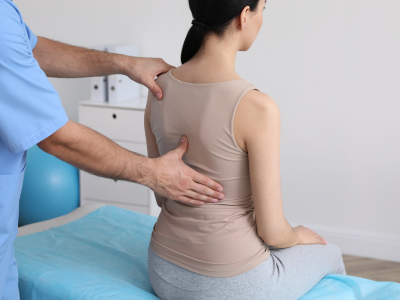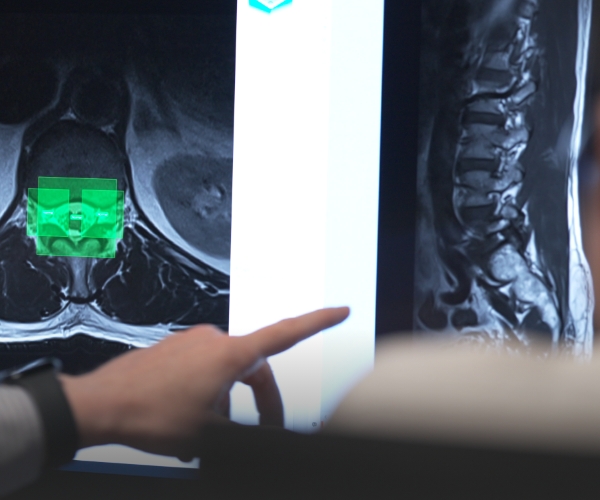Published on 8 June 2023
Being overweight puts you at a higher risk of knee deterioration. Learn why maintaining a healthy body weight is important for your knees and overall health.
Knee lifts into extension
Bend your right knee and bring your thigh
parallel to the water surface. Straighten your
right knee forward and hold the position for
a few seconds. Then lower your right leg
down slowly, keeping your right knee
straight. Repeat 10 times. Repeat with your
left leg.
Half squats
Hold onto the side of the pool for balance.
Bend both knees to lower your hips back
into a half squat position with your back
straight. Hold the position for a few seconds.
Return to starting position. Repeat 10 times.
Standing side leg lifts
Keep both knees straight and lift your right
leg out to the side. Lower the right leg slowly,
keeping your knee straight. Repeat 10 times.
Repeat with your left leg.
How heavy is too heavy for your knees?
If one’s BMI falls into either the overweight, obese, severely obese, or morbidly
obese category, he or she would be at higher risk of knee deterioration. In the
short run, this could lead to injury to the knee’s meniscus, cartilage or ligament,
and in the long term, knee osteoarthritis.
Severe knee osteoarthritis may lead to total knee
replacement surgery
“In western countries, a significant proportion of patients in need of total knee
replacements exhibit obesity,” shared Adj Asst Prof Wang Lushun, Senior
Consultant, Division of Hip & Knee Surgery, Department of Orthopaedic Surgery ,
Ng Teng Fong General Hospital (NTFGH) .These patients are also at high-risk of complications such as higher rates of
wound infection.
“Obesity also reduces the lifespan of not just our native joints, but also of our
replaced prosthetic joints (knee replacements).”
Other common signs of deteriorating knee health include:
1.
Pain in the knees during and after exercises that only get better with rest
2.
Stiff knees especially after prolonged sitting or inactivity
3.
Deformity in the legs (eg. bow leggedness)
4.
Warmth and swelling in the knees
Waist circumference is also often used and is a marker for health such as
cardiovascular risks.
“Given that the knees support a bulk of body weight, shaving off the kilograms
significantly reduces pressure on the knee joints,” explained Adj Asst Prof Wang.
NUHS’s weight management programme aims to help patients achieve a healthy
weight range through the following method:
•
Dietary management
•
Exercise & Physical therapy
•
Behaviour modification (lifestyle changes)
•
Medical therapy
•
Surgery
On a regular basis, patients can also partake in “aerobic and resistance training
programmes that are safe and effective treatments for knee osteoarthritis. This
can be done three days a week, one hour per day,” suggested Adj Asst Prof
Wang. “Aquatic aerobic exercises are safe as they are non-weight bearing or
impact activities. I would routinely recommend these to patients,” he added.
Aquatic aerobic exercises are highly recommended
Exercising in water places less stress on the knees than land-based exercises
due to the natural buoyancy of water, which helps to support the body’s weight.
“Moving your body against the resistance in water not only helps strengthen
muscles and improve cardiovascular endurance, but also burns more calories
which may promote weight loss,” shared NTFGH Senior Physiotherapist
Ms Faye Ng.
Consider an appropriate pool depth. A deeper pool provides more resistance
and greater buoyancy (more support of your body weight).
The links between the deterioration of knee health and obesity are well
established. According to local data gathered in 2015, the risk of total knee
replacements increased by 27% with increasing levels of Body Mass Index (BMI).
Based on a 2019/2020 local survey,
among Singapore residents aged 18 to 74 years: 1 in 10
Singaporeans are
obese
Obesity more common among males
20.7
%
high health risk
based on BMI
has
••••••••••••••••••••••••••••••••••••••••••••••••••••••••••••••••
According to local data gathered in 2015.
Body Mass Index or BMI is calculated as: weight (kg) divided by (height (m) x height (m)
Up to
TKR patients are obese
in western countries
50
%
high risks of
complications
These patients are also at
such as higher rates of wound infection
by
BMI
=
replacement (TKR)
risk of total knee
27
%
Losing weight
can help to
reduce pressure
on the knee joints
on the
knees
reduce
4x load
of
weight loss
=
1kg
Less
40kg load
of
weight loss
=
10kg
load that the knees
need to support
Therefore,
Jogging on the spot
Jog on the spot by lifting your right knee up
and alternate with your left knee, swinging
your arms as you do.
Walking
Walk across the pool, swinging your arms as
you do.
Single leg balance
Lift your right foot off and maintain your
balance against the resistance of the water.
Hold the position for 15 to 20 seconds or as
long as possible. Repeat with your left leg.
“Stay hydrated and drink before and after your workout session to avoid dehydration. You may not
notice that you are sweating with aquatic exercises,” Ms Ng added.
“Stop and get out of the pool immediately if you experience any giddiness, breathlessness, pain, or other discomfort. Seek medical attention if required.”
Beyond affecting the knees, obesity also has been linked to a host of other ailments which include coronary heart disease, diabetes (type 2), high blood pressure, stroke, and cancer.
Download the full infographics here .




